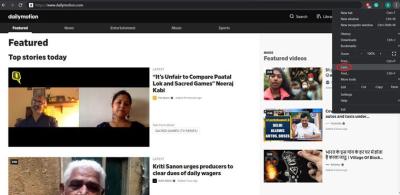Have you ever stumbled upon a LinkedIn Learning course that left you slightly confused because it didn’t include PowerPoint slides? You’re certainly not alone! Many learners wonder why some courses are designed this way. In this post, we’ll explore the reasons behind this trend and shed light on the unique structure of LinkedIn Learning courses.
Understanding LinkedIn Learning's Course Structure
LinkedIn Learning is known for its diverse range of courses, but not all of them rely on traditional PowerPoint presentations. Instead, the platform styles its courses to foster engaging and interactive learning experiences. Here’s a closer look at how these courses are structured:
- Video-Centric Learning: Most LinkedIn Learning courses prioritize video content. Instructors often prefer to deliver their lessons through visually engaging videos that enable them to demonstrate concepts in real-time. This method allows learners to see practical applications instead of just reading bullet points on a slide.
- Hands-On Projects: Many courses include practical projects or exercises, encouraging learners to apply what they've learned immediately. For instance, a software development course might guide students through building a small app instead of just talking about the tools used.
- Interactive Components: Some courses incorporate quizzes, simulations, or scenario-based learning activities to help embed knowledge. These interactive elements often replace the need for PowerPoint slides, providing a more dynamic learning experience.
- Instructor-Led Demonstrations: Instructors often showcase their expertise through in-depth demonstrations. For example, a cooking course might focus on the actual preparation of a dish rather than presenting a recipe in slides.
- Focus on Discussion: Some courses encourage discussions and Q&A sessions, offering learners a more conversational approach to understanding concepts. This format can sometimes feel more engaging than simply reading from slides.
In summary, while PowerPoint presentations can be effective, LinkedIn Learning opts for a more immersive and interactive style that better suits the digital learning environment. This approach not only enhances retention but also encourages a deeper connection with the material.
The Role of Visual Aids in Online Learning
Visual aids are like the cherry on top of a learning experience—enhancing understanding and retention. When it comes to online learning, especially on platforms like LinkedIn Learning, these tools play a crucial role. Here’s why:
- Enhancing Engagement: Visual aids grab our attention! They break up the monotony of text and provide a more interactive experience. Think about it—how often do you zone out during a long lecture? Slides with images, infographics, or videos can help keep learners engaged.
- Simplifying Complex Information: Some concepts are tough to grasp just through words. Visuals can simplify these ideas. For instance, a chart can clarify trends better than a paragraph of text describing them.
- Boosting Retention: Studies show that people remember information better when it's paired with visuals. Combining text with images or videos can help solidify that knowledge in our minds.
- Providing Structure: Well-designed slides offer a roadmap for the lesson. They highlight key points and give learners a way to follow along, making it easier to track their progress.
In summary, visual aids are essential for effective online learning—they make the experience richer, easier, and more enjoyable!
Reasons for the Absence of PowerPoint Slides
Have you ever noticed that some LinkedIn Learning courses skip the PowerPoint slides altogether? There are several reasons for this, and understanding them can shed light on the teaching strategies employed. Here are a few:
- Focus on Interaction: Some instructors prefer a more interactive format. They might choose to engage with students through discussions or live demonstrations, which can be more effective than passive slide presentations.
- Emphasis on Real-World Applications: Courses that center around practical skills may prioritize hands-on experiences over traditional slides. For instance, a course on coding might involve live coding sessions rather than slides filled with code snippets.
- Catering to Different Learning Styles: Not everyone learns the same way. Some courses are designed to adapt to various learning preferences, focusing on auditory or kinesthetic learning rather than visual inputs.
- Streamlined Content Delivery: Instructors may believe that too many slides can overwhelm learners. By eliminating them, they aim to create a more focused and streamlined experience.
In conclusion, while PowerPoint slides are a common tool in education, their absence in some LinkedIn Learning courses can enhance the learning experience in unique ways.
Alternative Teaching Methods Used in Courses
LinkedIn Learning courses are designed with a variety of teaching methods that go beyond traditional PowerPoint presentations. In fact, many instructors leverage innovative techniques to engage learners and enhance the learning experience. Here are some alternative teaching methods commonly employed:
- Video Tutorials: Many courses rely heavily on video content, allowing instructors to demonstrate concepts visually. This can include screen recordings, animations, and real-time coding examples, which are especially popular in tech-related courses.
- Interactive Quizzes: To keep learners engaged, many courses integrate quizzes throughout the modules. These quizzes not only test knowledge but also give immediate feedback, helping learners identify areas for improvement.
- Hands-On Projects: Courses often feature practical assignments where learners can apply what they've learned in real-world scenarios. This project-based learning fosters deeper understanding and retention.
- Discussion Forums: Some courses encourage interaction among learners through forums or discussion boards. This collaborative approach allows participants to share insights, ask questions, and support each other’s learning.
- Case Studies: Using real-life examples or case studies helps learners connect theoretical concepts to practical applications, making the lessons more relatable and memorable.
These alternative teaching methods cater to different learning styles and preferences, ensuring that a wide range of learners can benefit from the courses, even without the traditional PowerPoint format.
Conclusion
In conclusion, the absence of PowerPoint slides in some LinkedIn Learning courses is not a drawback but rather an intentional design choice. By utilizing alternative teaching methods, these courses can create a more dynamic learning environment that caters to diverse learner needs. Instructors focus on engaging content delivery through video tutorials, interactive quizzes, and hands-on projects, all of which enhance understanding and retention.
While PowerPoint presentations have their place, the modern learner often benefits more from approaches that foster active participation and practical application. As online learning continues to evolve, it’s exciting to see how platforms like LinkedIn Learning are redefining the educational experience, making learning not only informative but also engaging and enjoyable.










